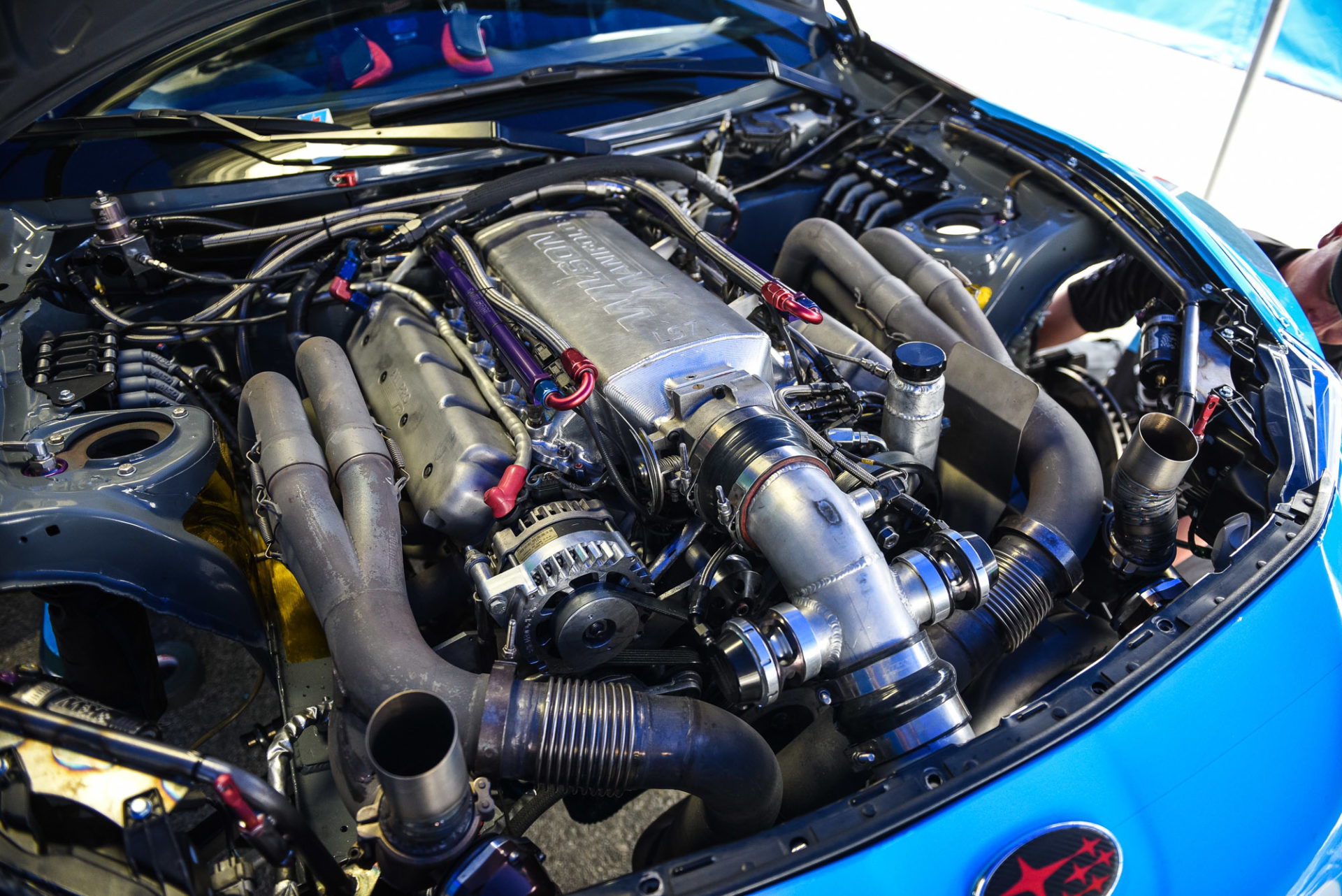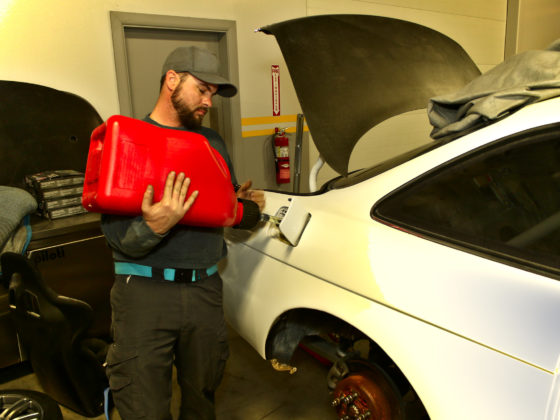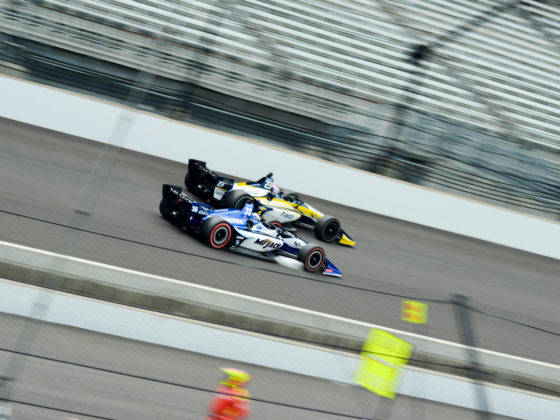,

The FSR is a strut type piston meaning that it has a reduced slipper skirt profile. In the past, reduced area slipper skirts meant light weight and low friction, but lots of noise and sometimes rapid wear to the piston, rings and cylinder walls. Even with our long rods, our stroke to rod length ratio isn’t that great so we are very cognizant of piston side loading.
With the FSR pistons, we don’t have to worry too much. JE has the piston design and barrel profile down and we have found FSR pistons to run quietly without excessive skirt and bore wear. In fact, we have used FSR pistons in Dai’s motors before with great results.

The strut-type design also means minimal weight as there is no excess material around the piston pin, unlike fully skirted pistons. You can see some of the intricate under the ring land CNC machining here that removes all excess weight in low-stress areas identified by FEA stress analysis.

The JE FSR pistons are made from low silicon 2618 alloy. 2618 is very ductile and tough, properties which are appropriate for hard use motors. 2618 expands more with heat and needs to run a wider piston to wall clearance than higher silicon alloys which in the past meant a more noisy engine, but JE’s advanced skirt profiles have reduced the piston slap and the engines run quietly even with wider clearances.

Napier rings give better oil control at high rpm and break in quickly for excellent compression seal. The rings narrow profile and are low tension for less flutter and better seal at high RPM and less friction.
The oil rings also have a narrow profile for less flutter and friction. There are two scrapers on either side of a thin separator. The separator gives space for the oil to drain via holes in the oil ring groove.
Cosworth style round wire pin keepers are used. We like these because they are relatively easy to install and remove but have very good retention of the piston pin.



